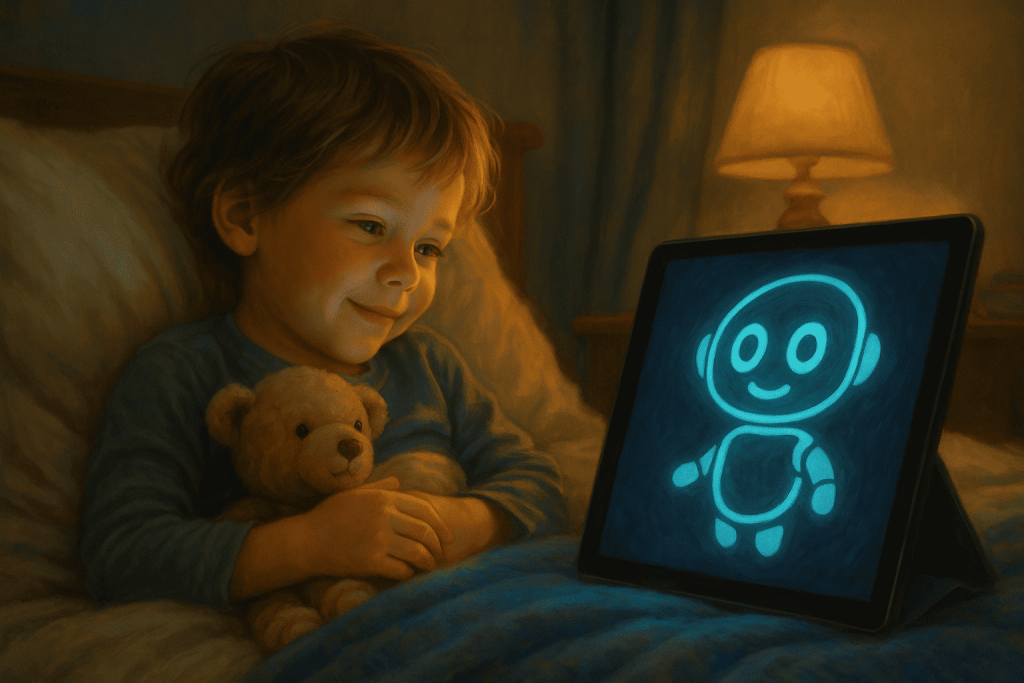In recent years, artificial intelligence has increasingly found its way into family homes—not just as a tool for adults, but also as a companion for children. From interactive storytelling to answering countless “why” questions, GPT-based systems are beginning to play a unique role in the daily lives of kids. With the rise of conversational AI, parents are discovering that GPT can be both an entertaining and educational resource for their children—especially during quiet bedtime hours.
One of the most heartwarming applications of GPT technology is in the creation of personalized bedtime stories. Parents can input details about their child’s interests, favorite animals, imaginary worlds, or even personal experiences, and GPT will generate a custom tale tailored just for that child. Unlike traditional storybooks, these AI-generated stories can evolve with each night—continuing adventures, introducing new characters, and adapting themes based on the child’s mood or curiosity.
More than just stories, GPT offers an intelligent, responsive dialogue that can answer children’s endless questions about the world around them. Why is the sky blue? How do volcanoes erupt? What do astronauts eat in space? GPT doesn’t tire or run out of patience—it listens and responds clearly, in an age-appropriate tone, helping children learn at their own pace and in a format they find engaging.
Beyond education, GPT can also act as a creative partner. Children can co-author stories with GPT, learning the basics of narrative structure, language, and storytelling along the way. Some even treat GPT as a kind of invisible friend—an ever-available companion for role-playing games, poems, riddles, and interactive play. This digital companionship can boost creativity, spark imagination, and encourage a love for language and learning.
However, introducing AI into a child’s life must come with caution and oversight. While GPT is capable of simulating empathy and adapting to children’s conversational styles, it is not a human being and does not have real emotions or moral judgment. Parents should guide the interaction to ensure the AI is used appropriately—both in terms of language and subject matter.
Content filtering and parental controls are crucial when children interact with AI. Developers have implemented various safety measures, such as age-appropriate responses and filtered vocabulary, but these systems are not flawless. Parents should supervise younger children’s interactions and regularly review the types of content the AI is producing. Open discussions about what the AI can and cannot do will help children better understand the boundaries of this technology.
It’s also important to ensure that children maintain a healthy balance between screen time and real-world experiences. GPT can support learning and imagination, but it should never replace human connection, outdoor play, or reading physical books. Used mindfully, it can complement traditional activities—turning passive entertainment into active, personalized learning.
As AI continues to evolve, its potential to enhance childhood learning and development is enormous. GPT might not be a substitute for a parent’s loving voice or a teacher’s wisdom, but it can offer something unique: a responsive, ever-curious assistant ready to explore the world with a child, one bedtime story at a time.
Conclusion: A Digital Companion with a Human Touch
GPT is proving to be more than just a technological novelty—it’s becoming a playful teacher, a bedtime storyteller, and a supportive tool for curious young minds. When used thoughtfully, with parental guidance and creativity, AI can help nurture a child’s sense of wonder and discovery. In the future, children may not only remember fairy tales from books, but also the magical stories they co-wrote with their friendly AI companion under the stars.



ai bedtime stories r so fire 👍wish I had something like that
Well, I had a mom, and Im pretty sure she was way better than this, lol 😂
haha, gen alpha is aikids lol 😁
ai bedtime stories? 😬 nah, kid needs real ppl